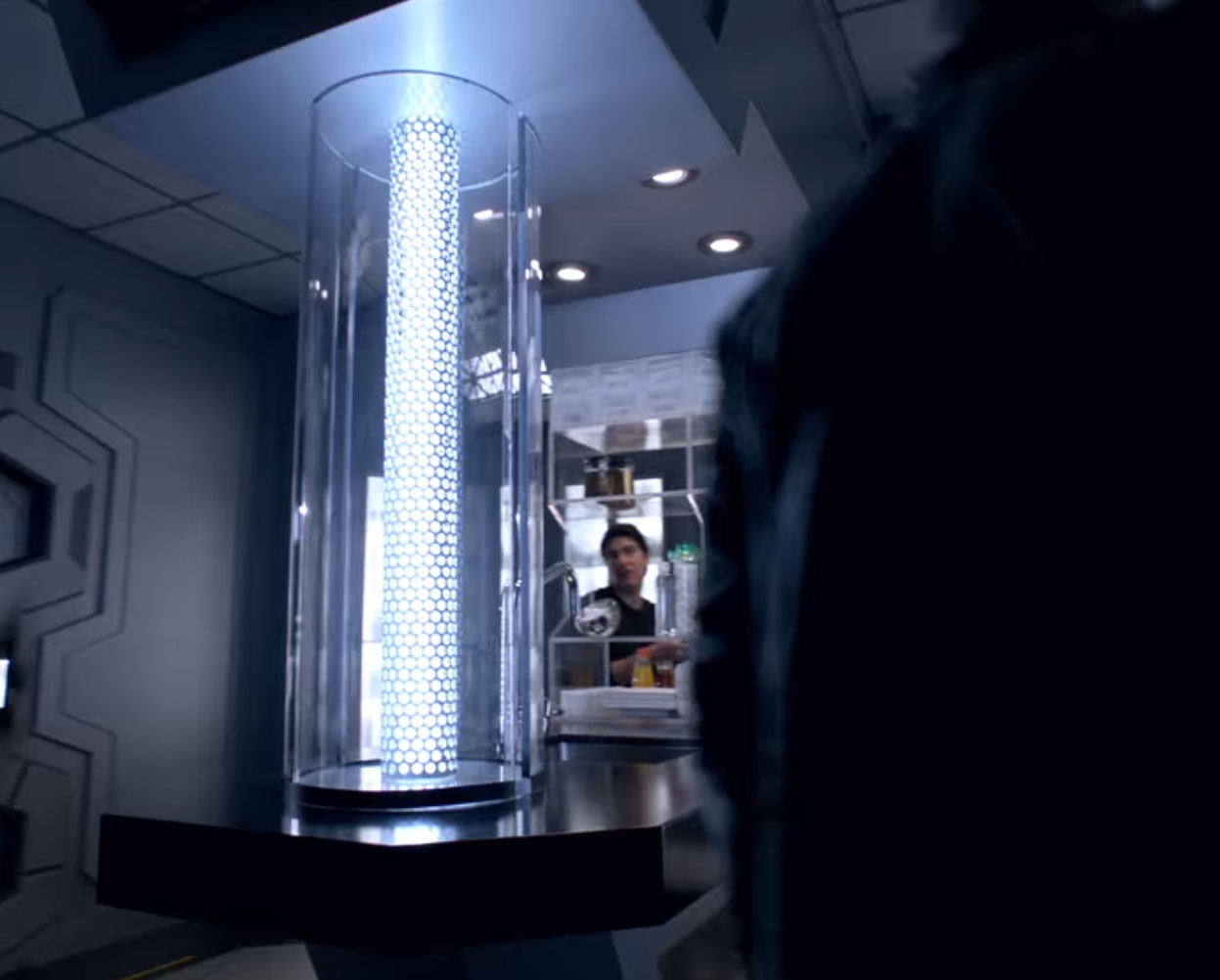Hive Lamp

This is a 3.5 foot tall 3D printed LED lamp.
It built out of 21 parts that took about 90 hours of printing. The inspiration for this project came to me while I was watching DC Legends of Tomorrow in back 2016. I saw a white glowing hive lamp that looks amazing and I wanted to build one for myself. And this is what I did :)

The project took me a while to complete, since I don't like to leave my 3D printer running without my attention, I had to print those parts when I'm home (6-7 hours of printing for the big parts).
Supplies
1x Acrylic Tube (I.D: 94mm O.D: 100mm Height: 1m)
1x Carton Tube (O.D 54mm, I.D: 44mm, Height: 1m)
1x ESP32
1x 5m LED Strip WS2812B (60 LEDs per meter)
1x 1000uF Capacitor
1x 470ohm Resistor
1x bondo 901 Plastic Metal
1x 3M Scotch Gel Glue
16x M4 Screws
16x M4 Nuts
6x M3 Inserts
6x M3 Screws
3D Printing

Print all the parts according to 3d-printing-assembly.pdf file.The resolution of the print is depends on your available time. The finer you print the better it gets and less sanding at the end.
Gluing, Filling and Sanding


To glue the main parts I user 3M Scotch Gel Glue, I found that its viscosity and cure time was perfect for the job, but if you can find something like this it can work too. I've glued 2 parts each time and put dumbbells weights on them until the glue cured.
After all the parts were glues together the parts had small gaps between them that were need to be filled.
I've used 3M bondo plastic metal 901. It has short curing time so I work in small parts quickly.When all the gaps were filled I've send it to make it flush with the printed part.
The third part was to spray paint all the assembled part with filling primer so it can fill all the 3D printed gaps (Rust-Oleum, Gray, GrayRust-Oleum). Now the main sanding work starts, the entire surface of the lamp was needed to be sand with find grade. Once the surface is clean and smooth you can paint it. I've used silver color to match the reference I saw but you can choose any color you like.
LED Strip Assembly & Wiring



I've wrapped the LED strip around the carton tube and at the two ends I drilled holes so the wires can go through.
The LED strip is 5v and can draw up to 18A! so you need a powerful power supply.
To avoid (or at least minimize) the color change across the strip due to voltage drop you need to inject the power in both sides of the strip and it will be useful to do it also in the middle of it.
This will keep the color even throughout all the strip length.
Now it is just simply wire it to the ESP32 and the power source directly like in the attached wiring picture.
Light Diffuser
The initial idea was to use a semi-transparent white acrylic tube. Since I couldn't managed to get one, I've used clear acrylic tube, and to diffuse the light I used rolled parchment paper inside the tube.
Concrete Base

To make the whole structure stable I've made a concrete base. The inner part of the base was 3D printer so it can be attached easily to the lamp with M4 screws.
To the inner part I've glued "legs" to hold some inserts so I can cover it and secure it with M3 screws. The inner part also includes "tunnel" so later we can pass some wires from the power connector (DC 5.5mm jack).
This whole inner structure was centered in 18cm lubricated stainless steel ring so it can be removed easily later on. My concrete mixture was 50% cement and 50% sand, you can play with the ratio to get the desired texture. While the concrete was soft I used 3D printed stamp to make a mark on it. Now the waiting part begins, you should give it to rest at least one and a half week before you can use it. When it is in its 70%+ strength it is safe to handle without worrying that it is going to crack and break. While the concrete is curing I kept spraying it with water from time to time to keep it moist, this reduce the probability for cracks.
After the based is cured I used transparent spray paint so seal it.
Coding
You can find the source code for the ESP32 firmware in my GitHub repository.
I'm also working on Flutter based mobile app, it is also in the repository under the mobile_app branch.
Final Results




What next?
I need to complete the mobile app, create a dedicated PCB for it and replace the RGB strip with RGBW strip to get true pure white color.